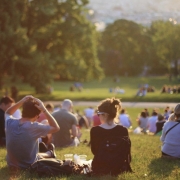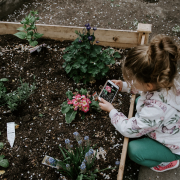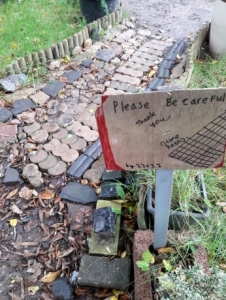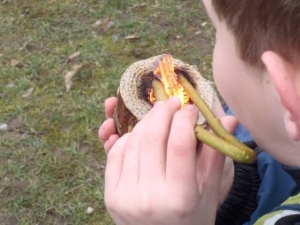The Power of Community and Masterminds – creating connection and empowerment during our world crisis
Becky Carlzon
Co-creator of LearningPioneers.co and Letspressplay.co
If there’s one thing for sure, our shared recent world crisis has rocked the world. In many ways, this has had devastating consequences – lives have been lost, businesses have crumbled, people have been isolated.
In other ways, we have had to learn to pivot – to think on our feet and think up creative and innovative ways to solve problems; most closely to our hearts as teachers, this has involved developing effective online learning programmes whilst juggling home lives, navigating new technology and, if we’re lucky, getting out of our pyjamas, ready for our 8am maths lesson, trying to maintain the focus of 30 children surrounded by siblings, pets, and, in one of my calls, a feral bat!
Although this has been a challenging process, perhaps there are some gifts too – some silver-linings to the cloud of COVID. For me, one of these gifts has been making space to reimagine.
Here are a few ways I started to reimagine after online learning:
- I wonder what learnings I can take forward from developing lessons remotely? What new technology can I incorporate? How might I be able to plan for more cross year group learning? How can I deepen relationships with families and therefore impact more on learning?
- Can we build connection and community, even when isolated in our own homes?
- Now that we can’t invite in consultants for staff training, how else could we develop effective professional learning opportunities?
It was these final two wonderings, that led me to develop online learning communities and Masterminds. Here were my “what ifs” to make that happen:
- What if we could create a safe space for hungry-to-learn practitioners to connect?
- What if we could run regular “Mastermind” sessions where we could troubleshoot best practice together?
- What if we could collectively write a list of “dream” speakers and co-create questions for them to suit our individual needs and contexts?
- What if, by doing this, we could connect practitioners, philosophies, curriculums across the globe and, in doing so, open our minds to new possibilities?
Well, that’s just what we did – We built an international community called “Learning Pioneers” committed to learning from and with one another, powered by the world’s learning minds. Since I have worked closely with Professor Guy Claxton, this began as developing our practice in Learning Power. Since then, it has expanded to exploring any ideas and approaches that empower students and ensure learning is meaningful, purposeful and joyful. So far, we have co-created interviews for speakers including Kath Murdoch, Professor Guy Claxton, Trevor MacKenzie, James Nottingham and David Price OBE. We have learned and implemented effective strategies in, amongst others, assessment, learning environments, growth mindset, agency and challenge.
And, now, a year after having got this started, we are really starting to understand the impact of developing a learning community like this. Research into teacher collective efficacy, shows that continuous professional dialogue over time can have a 4-fold impact on learning (Hattie). A GTCE study in 2007 found that effective teacher learning involves sustained interactions and interventions over time, teacher choice and influence over their learning and learning within a collaborative network – turns out, we have all three.
So, now I am wondering:
- How can I empower others to set up learning communities of their own? Our focus is on the most impactful and meaningful learning. Other communities could be set up around STEM, best use of technology, oracy, inquiry, student agency, SEND provision … The possibilities are endless!
- How can we go even deeper in our Learning Pioneers community? For example, Dr Kulvarn Atwal, who has a PhD in developing dynamic learning communities, will be an integral part of our learning next year.
- What would this look like as a whole-school approach to professional learning? Not only are whole schools signing up to Learning Pioneers, but I have developed a new learning community called “PressPlay” with Kym Scott, Early Childhood Consultant, dedicated to supporting and empowering schools to take play beyond Early Years.
And I am wondering about you too.
- What have your greatest challenges been during our world crisis? Did you get better at overcoming them as time went on?
- Were there any silver linings to your clouds?
- What are your thoughts on online learning communities? If you were to set one up, what would you like to investigate and learn about with others? Which speakers would you invite in?!
I would love to hear the answers to these questions! Imagine if we could all connect with like minds across the globe to learn and grow together? We could fire up education and learning from the ground up and, quite frankly, change the world (or at least our part of it!).
You can link with Becky via Twitter @beckycarlzon and via LinkedIn.
And find out more about her learning communities via:
and
What do you think about the points raised in this article? We’d love to hear your feedback.
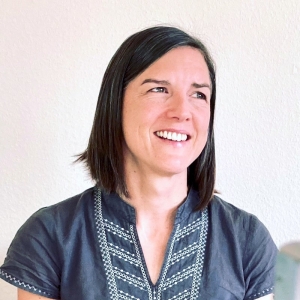
ABOUT THE AUTHOR
Becky is the Co-creator of Learning Pioneers, with a focus to make our classrooms as exciting, impactful and purposeful as possible. You can find out more at learningpioneers.co.
She is also the co-author of Powering Up Children, which is bursting with tips and techniques to get students learning muscles stretching from a young age. The book is designed for busy primary school teachers who want to get started on the LPA journey as well as for those who have already made good progress and are looking for fresh ideas.

